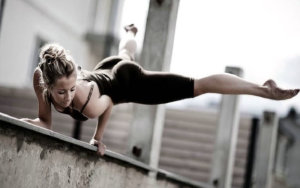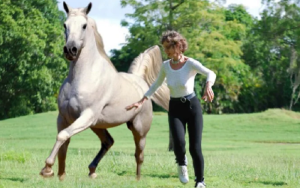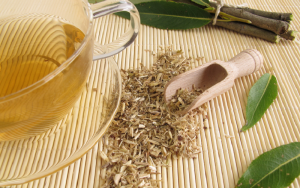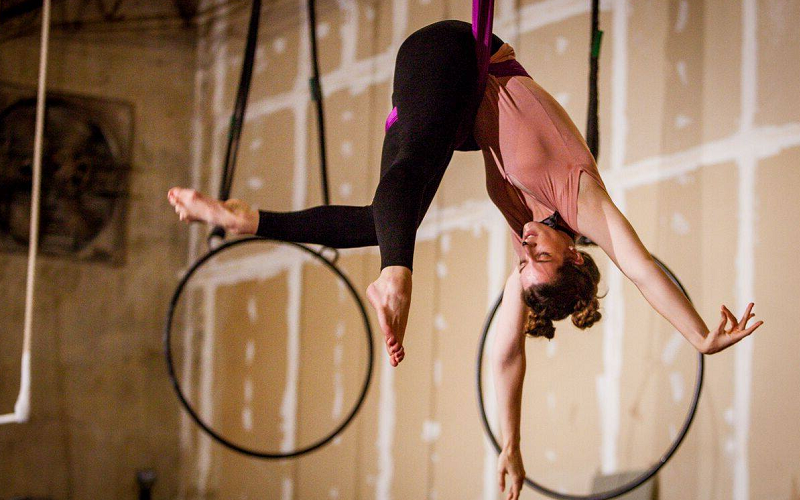
In the quest for physical fitness and a healthier lifestyle, we often search for unique, engaging activities that will not only strengthen our bodies but also captivate our minds. One such unconventional but rewarding path to fitness is through the dynamic world of circus arts. The glitz, glamour, and sheer athleticism of circus performers are fascinating, but beneath the spectacle, they present a potent mix of strength, balance, flexibility, and coordination.
Contents
Introduction to Circus Skills and Fitness
Circus skills are a diverse array of physical activities derived from the performances seen in traditional circus shows. These skills range from juggling, acrobatics, and tightrope walking to more complex activities like aerial silk performances and stunt riding.
The circus performers train rigorously to master these skills, which require excellent physical conditioning, including strength, balance, flexibility, coordination, and even mental tenacity. The artistry and daring of circus performers are the result of long, disciplined hours of practice, which ultimately transform their bodies into prime examples of physical fitness.
At first glance, it might be difficult to see the connection between circus skills and fitness routines. However, when you dissect the individual components of each circus skill, it becomes clear that they encompass numerous elements of fitness training.
The graceful flips of acrobats demand flexibility and core strength; the delicate balance of tightrope walkers relies on fine muscle control; and the rapid, calculated tosses and catches of jugglers call for coordination and reflexes. These skills, which form the heart and soul of a circus, can be adapted and incorporated into a fitness routine to reap similar benefits and add an enjoyable challenge.
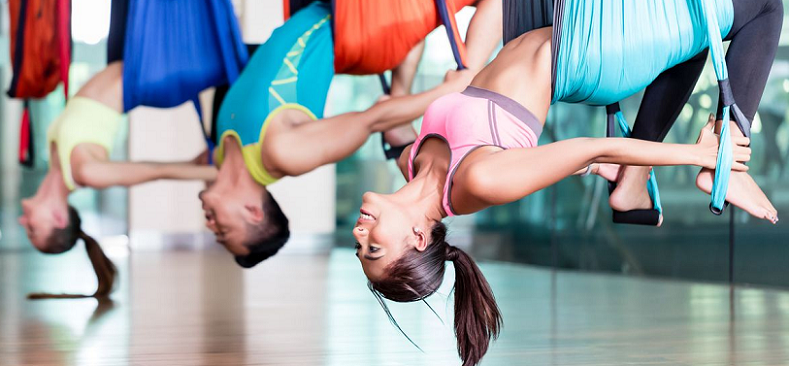
The Value of Circus Skills for Fitness
You might be wondering, “What makes circus skills special? Can’t I achieve similar fitness levels with regular gym workouts or sports?” While it’s true that traditional fitness routines can help you stay fit and healthy, the incorporation of circus skills offers unique benefits that make them worth considering.
Discussion on the Unique Aspects of Circus Training
Circus training is much more than meets the eye. Behind the extravagant performances are countless hours of dedicated practice, and this training process is filled with unique aspects that set it apart from regular fitness regimes.
Firstly, circus training requires the integration of strength, flexibility, balance, and coordination, leading to a highly comprehensive workout. This simultaneous development of multiple facets of fitness is not always found in traditional workouts, where you might focus on one aspect at a time.
Secondly, circus training emphasizes functional fitness. The moves you practice aren’t just for show; they involve the use of multiple muscle groups working in tandem, reflecting real-world movements and enhancing overall body strength.
Finally, circus training can be incredibly fun, making your fitness journey much more enjoyable. The thrill of learning new skills and the satisfaction of mastering them can keep you motivated, ensuring you stay consistent with your fitness routine.
The Physical Benefits of Circus Skills
Circus skills offer a plethora of physical benefits. They can enhance muscular strength, particularly core strength, as most circus skills require a strong center of gravity. Flexibility is another key benefit, with many skills involving stretches and movements that increase your range of motion. Balance and coordination also see dramatic improvements, as circus training often involves manipulating your body or objects with precision. Furthermore, with regular practice, you may find improvements in cardiovascular health and overall endurance [1].
The Mental and Emotional Benefits
The value of circus skills for fitness doesn’t stop at physical benefits; they also offer mental and emotional perks. Circus training can help improve concentration and mental agility, as many skills require precise timing and spatial awareness. They also promote discipline, patience, and perseverance, as mastering these skills takes time and dedicated practice.
Emotionally, circus skills can boost confidence and self-esteem, as the mastery of each skill is a clear, visible achievement. Moreover, the inherent fun and thrill associated with circus activities can bring joy and excitement to your workout routine, alleviating the monotony of traditional exercises [2].

Popular Circus Skills that Enhance Fitness
Circus skills are as diverse as they are thrilling. From balancing acts to high-flying acrobatics, each one offers unique benefits and challenges. But don’t worry, you don’t need to dive into the most advanced skills right away.
Juggling
Juggling is probably one of the first things that come to mind when you think of circus skills. It’s a fun, engaging activity that can become a valuable part of your fitness routine.
The Basics of Juggling
At its simplest, juggling involves throwing and catching multiple objects in a certain pattern. While it may seem like just a game of toss and catch, juggling requires a blend of concentration, hand-eye coordination, and precise timing.
How Juggling Contributes to Fitness
Juggling can serve as a great cardio workout when done continuously for extended periods. It also enhances hand-eye coordination, reflexes, and agility. The constant movement of your arms can build endurance and toning. Moreover, juggling demands a certain degree of mental concentration and can therefore also help in improving focus and mental agility [3].
Acrobatics
Acrobatics is another well-known circus skill that incorporates a variety of physical feats, from flips and tumbles to balances and contortions.
The Basics of Acrobatics
Acrobatics involves performing movements where the body flips, spins, jumps, or balances. It requires great strength, flexibility, balance, and precision.
How Acrobatics Enhances Physical Strength and Flexibility
Acrobatics can offer a full-body workout. It requires core strength for maintaining balance, arm and leg strength for supporting the body during maneuvers, and flexibility for achieving the full range of movements. Regular practice of acrobatics can lead to improved muscle tone, strength, and endurance [4].
Aerial Skills
Aerial skills refer to the breathtaking performances done while hanging from a height, using equipment like ropes, hoops, silks, and trapeze.
The Basics of Aerial Skills
Aerial skills involve performing a variety of movements and poses while suspended from a piece of equipment. They require considerable upper body strength, core strength, and flexibility.
Fitness Advantages of Aerial Skills
Aerial training can serve as an intense upper body and core workout, as you are often supporting your weight using your arms and maintaining body tension for control. It also promotes flexibility, as many aerial movements involve stretches and bends. Plus, the challenge of height adds an adrenaline rush that can make your workout more thrilling and enjoyable [5].
Tightrope Walking
Lastly, we will discuss tightrope walking, a skill that truly embodies the balance and precision of circus performers.
The Basics of Tightrope Walking
Tightrope walking involves maintaining balance while walking along a thin rope or wire. It requires extreme focus, control, and precision.
Fitness and Balance Benefits of Tightrope Walking
Tightrope walking serves as an excellent exercise for improving balance and core strength. The act of maintaining stability on the wire necessitates a strong, engaged core and careful, controlled movements. Moreover, the mental focus required can help improve concentration and mental clarity [6].
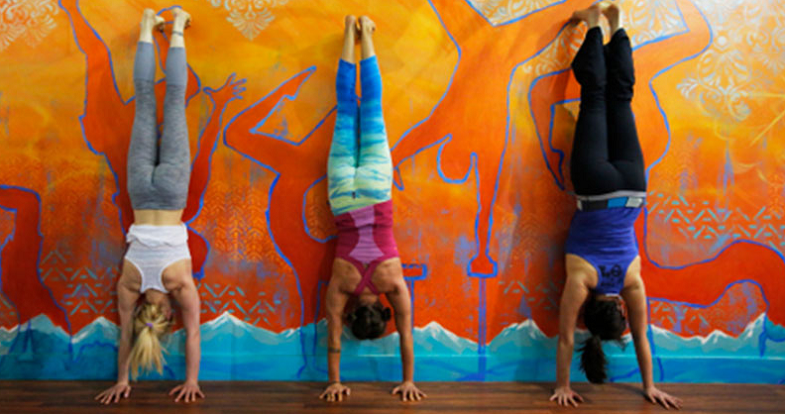
Integrating Circus Skills into Your Routine
Having explored the benefits of circus skills and some popular examples, you may be wondering how to incorporate these intriguing skills into your fitness routine. As exciting as it may seem, it’s important to approach this process thoughtfully and safely.
Setting Reasonable Goals
Before diving into the world of circus skills, it’s crucial to set some reasonable goals. Are you aiming to improve your flexibility, or is boosting strength your primary objective? Perhaps you’re looking for a fun and novel way to add cardio to your routine. Identifying your fitness objectives will help you choose the circus skills that align best with your goals.
Choosing the Right Circus Skill for Your Fitness Level
Not all circus skills are created equal, and it’s essential to choose activities that match your current fitness level. For instance, if you’re a beginner with limited upper body strength, starting with aerial skills might be challenging. Instead, you could start with juggling, which provides a fun cardio workout and boosts hand-eye coordination. As you grow stronger and more confident, you can then gradually move to more physically demanding activities.
Incorporating Circus Skills into Your Existing Fitness Routine
Once you’ve chosen a circus skill to learn, the next step is to integrate it into your existing fitness routine. Remember, the goal is to add variety and fun, not to replace your current workouts entirely (unless that’s your preference). You might choose to dedicate a couple of days a week to practicing your chosen circus skill, or perhaps you could start your regular workouts with a short circus skill session as a warm-up. The choice would depend on your personal preference, fitness goals, and schedule.
Scheduling Your Training
Consistency is key in fitness, and learning circus skills is no different. Ensure you set aside dedicated time for practicing these skills. You might need to adjust your schedule to fit in this new type of training, ensuring you have enough time for a proper warm-up and cool-down to prevent injuries.
Safety Considerations
Safety should always be your utmost priority when incorporating circus skills into your routine. Ensure you have the right equipment, suitable space, and proper training for the skill you’re practicing. Be aware of your body and its limits, and don’t rush the process. Some skills may require supervision, especially in the beginning stages, so consider working with a coach or an experienced peer [7].
Circus-Inspired Workouts: Examples and Suggestions
Now that we have a solid understanding of how to incorporate circus skills into a fitness routine, let’s discuss some specific examples of circus-inspired workouts. These workouts will offer a taste of what a circus skill-influenced fitness routine can look like and provide inspiration for creating your own unique routine.
Juggling Workout
A juggling workout is easy to incorporate into your routine, as it requires minimal equipment and space. Here’s a simple juggling workout example:
Warm-Up
Start with a gentle warm-up to prepare your muscles. This could involve a few minutes of light cardio, like jogging in place or jumping jacks, followed by some stretching to loosen up your arms and shoulders.
Juggling Practice
Spend about 10-15 minutes practicing your juggling skills. If you’re a beginner, this could involve juggling with two balls. As you become more proficient, you can add more balls or try different juggling patterns.
Juggling Cardio Circuit
Try a 15-minute circuit where you juggle for 1 minute and then do a cardio exercise, like burpees or high knees, for 1 minute. Repeat this circuit 7-8 times. This will give you a good mix of skill practice and cardiovascular exercise.
Acrobatics-Inspired Workout
An acrobatics-inspired workout can offer a fantastic full-body exercise routine. Note that this type of workout should be done in a safe environment, preferably under supervision if you’re a beginner.
Warm-Up
Begin with a dynamic warm-up to prepare your body, focusing on flexibility and mobility. This could involve movements like arm circles, leg swings, and gentle twisting motions.
Strength Training
Perform bodyweight exercises that strengthen your core, arms, and legs. Examples include planks, push-ups, lunges, and squats. Aim for 2-3 sets of 10-15 reps for each exercise.
Acrobatics Practice
Spend about 15-20 minutes practicing basic acrobatic skills, such as forward rolls, backward rolls, or handstands. Always prioritize form and safety.
Stretch and Cool Down
After your workout, take some time to stretch and cool down. This is essential for preventing injury and promoting flexibility, which is crucial for acrobatics.
Aerial Skills Conditioning Workout
An aerial skills conditioning workout focuses on building the strength and flexibility needed for aerial performances. It’s recommended to learn aerial skills under professional guidance, but you can do the following conditioning exercises at home:
Warm-Up
Start with a warm-up to increase your heart rate and loosen your muscles. You could include jumping jacks, high knees, and arm and leg stretches.
Strength Training
Next, move on to strength training exercises focusing on your upper body and core. These could include pull-ups, dips, and hanging leg raises. If you don’t have the equipment at home, you could do push-ups, tricep dips, and planks. Aim for 2-3 sets of 10-15 reps for each exercise.
Flexibility Training
Flexibility is critical for aerial skills. Spend about 10-15 minutes on flexibility exercises such as lunges, butterfly stretches, and backbends.
Cool Down
Conclude your workout with a cool-down period. Gentle yoga poses and deep stretching can be excellent for this.
References
[1] Circus Training Might Just Be The Next Big Fitness Trend
[2] Circus arts a good fit for exercise
[3] Fit in my 40s: roll up! Roll up! It’s time to master circus skills
[4] The psychological benefits of circus skills training (CST) in schoolchildren
[5] Circus 101: Features and Feats of Circus Bodies
[6] The Kolev Sisters Explain How To Train Like Cirque du Soleil Acrobats
[7] Circus Arts Therapy® Fitness and Play Therapy Program Shows Positive Clinical Results

